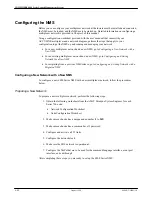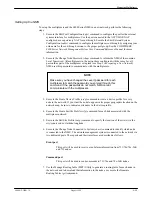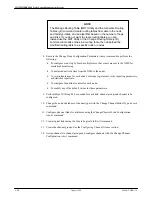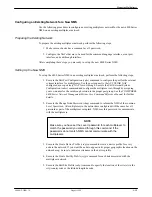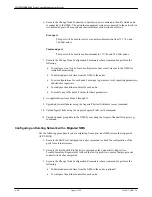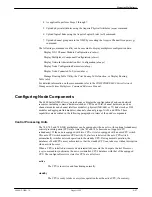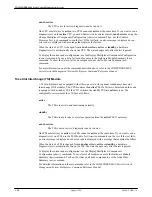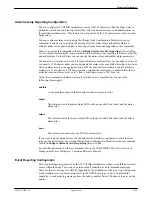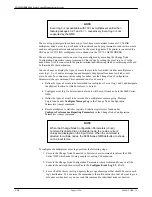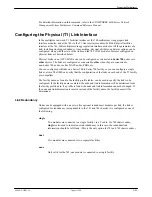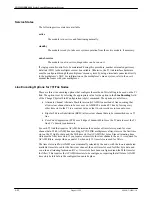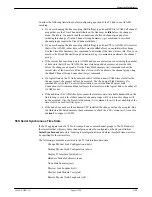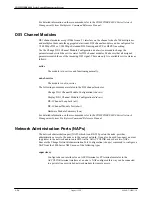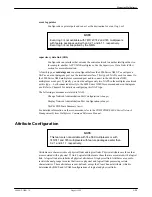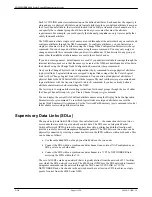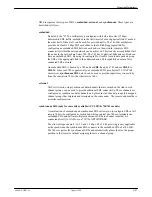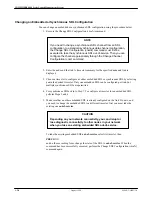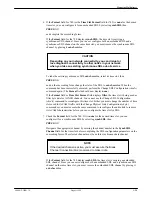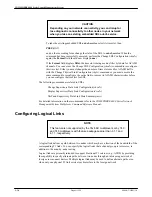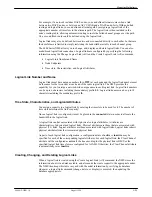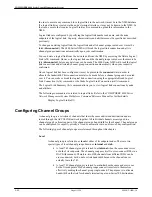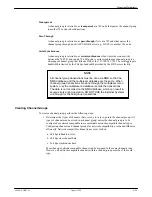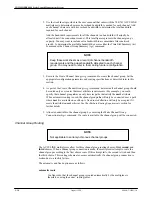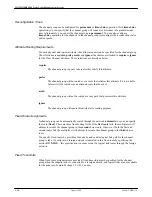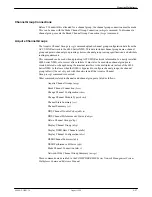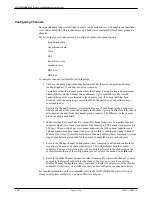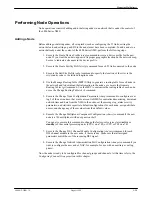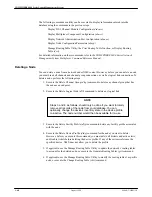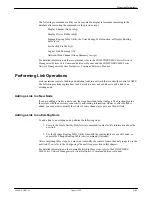
COMSPHERE 6800 Series Nework Management System
1-26
August 1994
6800-A2-GB21-10
Each ACCULINK node stores information on the defined attributes. Each node has the capacity to
store and use six physical attributes and six logical attributes plus a pre-defined attribute, known as
the Clear Channel attribute, that is related to each link’s ability to transmit clear channel data. You
can specify that a channel group should be routed only over routes that meet the attribute
requirements. For example, you could specify that channel group abc can only traverse paths that
satisfy the user1 attribute.
The NMS ensures that a single set of names are used throughout the network when you control and
configure attributes through the NMS commands. To configure attributes, you can first assign a
single set of names to the 12 attributes using the Change Node Configuration Parameters (chncp)
command. You can change an attribute name using the same command. You may only assign or
change names with this command when you direct it to all nodes. When directed to any group of
nodes other than all, the attribute names are sent to the subset of nodes.
If you do not assign names, default names are used. If you administer attribute routings through the
terminal interface, make sure that the names you create at the NMS are downloaded to all nodes in
the network using the Change Node Configuration Parameters (chncp) command.
Next, use the Change Physical Link Configuration (chplc) command to assign physical attributes
to physical links. Logical attributes are assigned to logical links using either the Create Logical
Link (crll) or Change Logical Link (chll) command. You can also upload physical attributes of
physical links to the 6800 Series NMS with the Acquire Physical Attributes (acpa) command and
logical attributes with the Acquire Logical Link (acll) command, if you have already defined
attribute characteristics before installing the NMS.
The last step is to assign attribute routing restrictions for channel groups through the use of either
the Change Channel Group (chcg) or Create Channel Group (crcg) command.
You can display the current list of defined attribute names using the Display Node Configuration
Parameters (dsncp) command. To see which logical links are assigned attributes, execute the
Logical Link Summary (lls) command. Use the Network Path Summary (nps) command to look at
the available routes using attribute restrictions.
Supervisory Data Links (SDLs)
The supervisory data links (SDLs) form the control network — the connections between two or
more nodes that are used to pass network control data. The SDL uses an Integrated Packet
Switched Network (IPSN) protocol to negotiate time slots, perform bandwidth allocation, and
provide a route for network management datagram packets. The SDL between two nodes can be
physically connected by creating a connection between the IPSN software within both nodes. This
can be done as follows:
•
Use the embedded SDL on the physical link between the two nodes.
•
Connect the SDL within a synchronous data channel to an external NAP configured as an
SDL port at one or both nodes.
•
Connect the SDL within a synchronous data channel to a 719/72x NETWORKER link,
accessing the IPSN within the 719.
The set of all SDLs make up a network that is logically distinct from the network of T1 facilities
over which the SDL network is carried. The 6800 Series NMS uses the SDL network to transmit
datagram commands into the network through the NAP on an ACCULINK or 719/72x
NETWORKER node. Each node in the network must have at least one SDL to achieve a single
point of control from the 6800 Series NMS.

